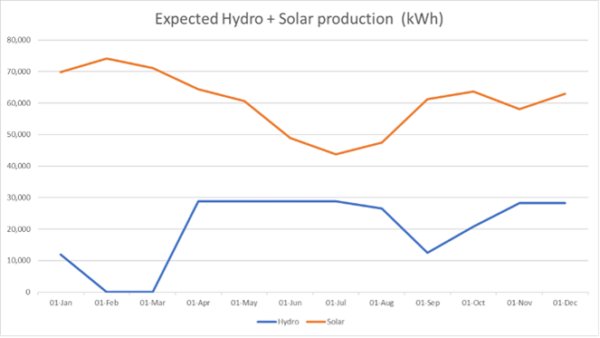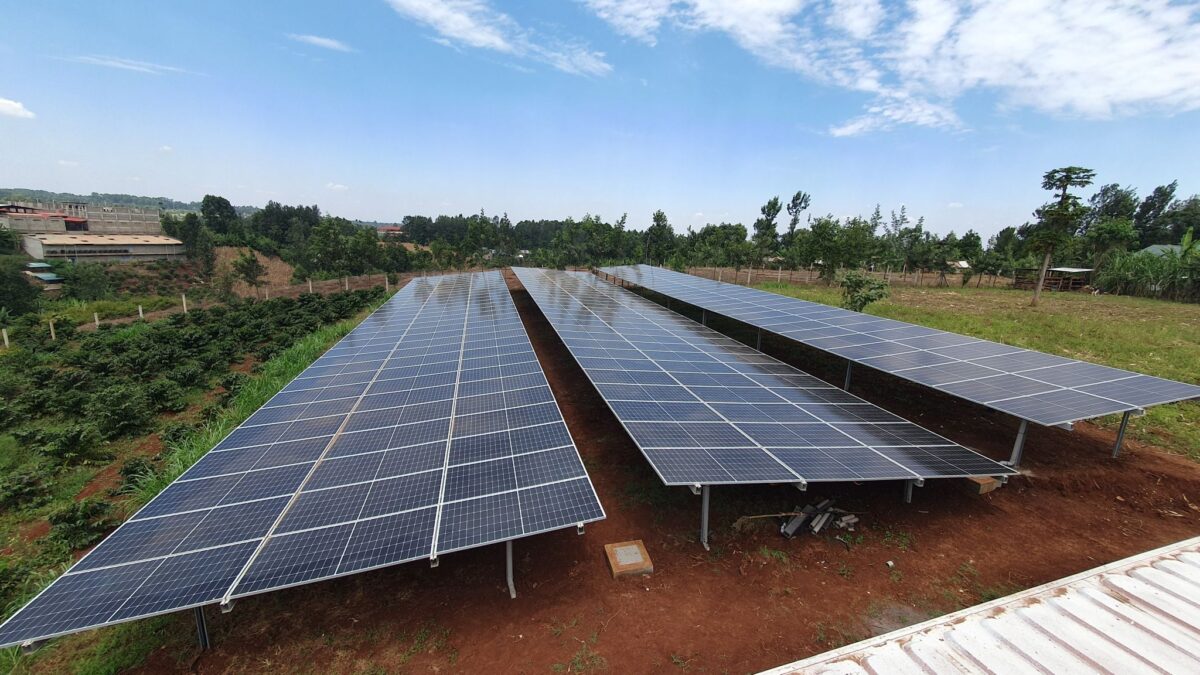Belgian-based hydropower company Hydrobox and Kenya-based C&I solar company SolarNow last week commissioned a hybrid solar-hydro plant in Gitwamba, rural Nairobi.
Located near the town of Baricha, Kirinyaga County – and on the premises of a formerly abandoned hydro project – the 1,200 m2 mini-grid facility is in close proximity to the nearby Rwamuthambi river. The facility uses the natural flow of the water to power a crossflow turbine, managed by Hydrobox, and is expected to deliver 50 KW of hydropower with a design flow of 0.65 m3/s.
The solar array, managed by SolarNow, has an installed capacity of 150 KW with expectations to ramp up to 350 KW next year. It is expected the Gitwamba power plant will connect 150 households, eight schools, two medical facilities and 10 businesses to power.
Hydrobox CTO Rik Vereecken told pv magazine that solar capture and storage would be the plant’s master and primary energy source, with hydropower acting as the secondary source or slave, supplying energy when the load was in “deficit”.

Renewable Energy Forum Africa.
“This combination leads to a stable and consistent power generation system,” he said. A 50 KW crossflow turbine, Victron Quattro inverters and chargers, Fronius Inverters, a 240 KWh storage facility and a 90 KVA backup generator comprise the hydro part of the project, Vereecken added.
Popular content
SolarNow director and CFO Ernst Vriesendorp told pv magazine that the technicalities between hydro and solar had “proven complementary” but did not go into detail as to how the solar component of the project was comprised.
He said that despite the project’s humble size, it has “large” benefits. “I think it's a very entrepreneurial and rewarding segment, and, in our opinion, with a very high impact potential,” Vriesendorp explained. “It is a technical achievement, but also a strategic achievement.”
Hydrobox sales manager Annelies Vanderwaeren told pv magazine that a power purchase agreement (PPA) with an unspecified business owner – whom they are considering their “anchor customer” – had been secured as well as another PPA with a “bigger telecom provider”. She also said the project is expected to be completely online by the year's end, adding the $650,000 project was financed through private equity funding and crowdfunding, with the latter garnering $263,511.
By the end of 2022, Kenya's total installed solar capacity stood at 307 MW, according to the International Renewable Energy Agency (IRENA). Around 90 MW of PV was newly deployed last year.
This content is protected by copyright and may not be reused. If you want to cooperate with us and would like to reuse some of our content, please contact: editors@pv-magazine.com.


5 comments
By submitting this form you agree to pv magazine using your data for the purposes of publishing your comment.
Your personal data will only be disclosed or otherwise transmitted to third parties for the purposes of spam filtering or if this is necessary for technical maintenance of the website. Any other transfer to third parties will not take place unless this is justified on the basis of applicable data protection regulations or if pv magazine is legally obliged to do so.
You may revoke this consent at any time with effect for the future, in which case your personal data will be deleted immediately. Otherwise, your data will be deleted if pv magazine has processed your request or the purpose of data storage is fulfilled.
Further information on data privacy can be found in our Data Protection Policy.